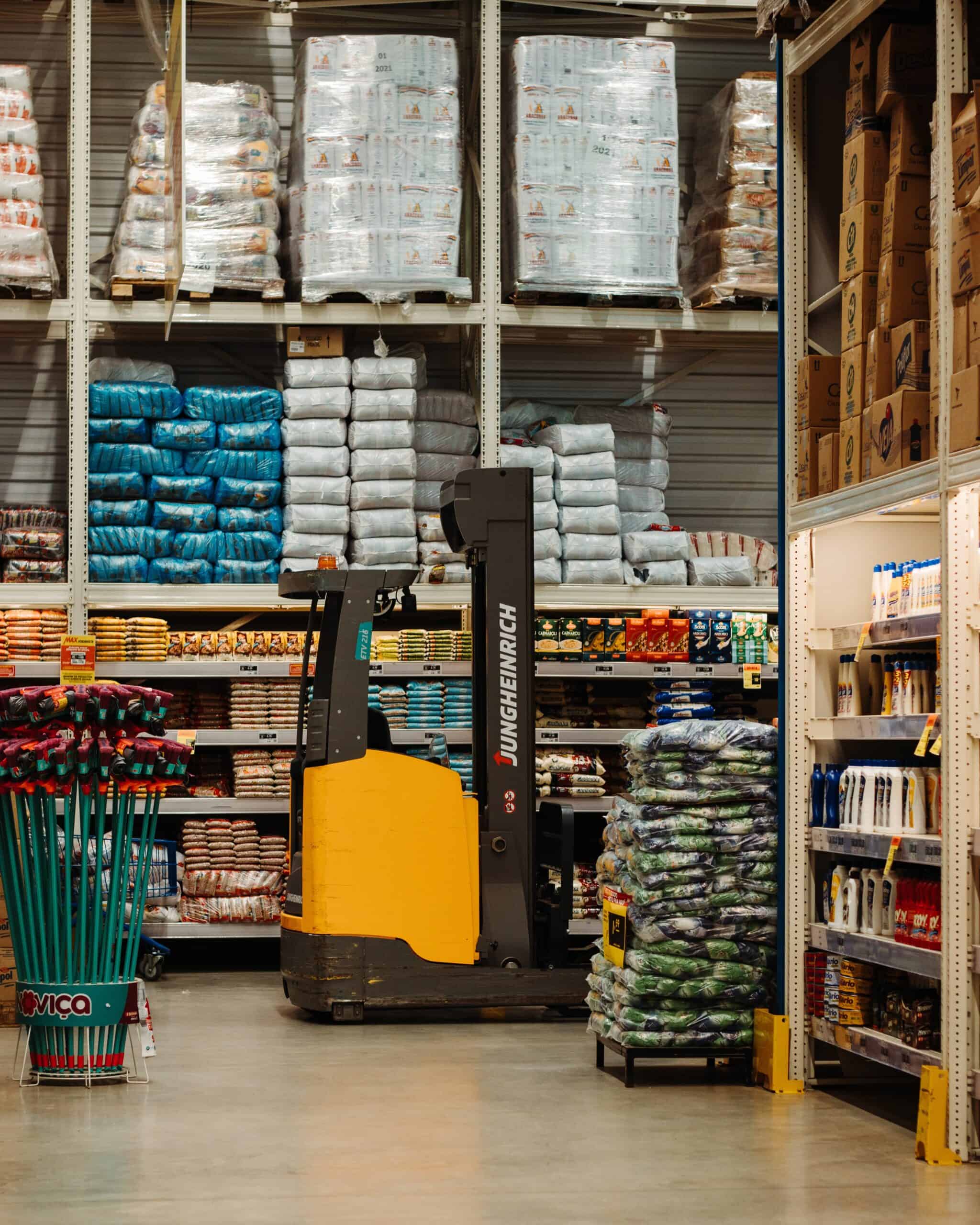When orders suddenly pick up either due to an act of God or an unexpected virality online, you need to be ready, and that’s where buffer stock comes in. Buffer stock is the extra inventory companies keep in stock to ensure timely deliveries in case of unexpected customers or supply chain complications.
Buffer stock is also often called inventory stock, stock inventory, supply chain safety net, or contingency stock. By any name, buffer stock inventory will improve workflows and delivery for customers. Here’s what you need to know:
How Does Buffer Stock Work?
Buffer stock is extra inventory stored to improve inventory flow with fluctuating customer demands. This inventory surplus is warehoused to prevent issues in the case of supply chain failure, transportation delays, an unexpected surge in demand, or other emergencies.
Buffer stock also helps businesses in predictable surges, like after a flash sale or Black Friday promotion. The amount of buffer inventory a company needs will be based on products and goods offers, average lead time, inventory trends, and annual cycles in consumer demand.
With unprecedented supply chain issues and major market fluctuations, having a buffer stock can also protect your profit margins and ensure product pricing while your business adapts to market changes.
How To Calculate Buffer Inventory
Ready to build your buffer stock inventory? Plan based on time, fixed stock safety, along with standard supply chain calculations.
Time-Based
Time-based buffer inventory calculation is a simple, standard formula for maintaining additional inventory based on time. In this case, if demand increases, the next supply of buffer stock will also increase.
This can also be calculated based on lead time. If a product’s lead time is one month, having a buffer stock equal to the average or maximum inventory needed in the time it takes for inventory to be replaced. With this option, if a company sells 500 units of a product per month and the product’s lead time is a month, they would keep an additional 500 products as buffer stock.
Fixed Safety Stock
Fixed safety stock is a common formula to easily determine the optimal inventory to keep as a buffer stock inventory. The formula to calculate fixed safety stock requires three steps:
- Multiply the Product’s Average Daily Demand by the Average Lead Time.
- Multiply the Product’s Maximum Daily Demand by Maximum Lead Time.
- Subtract the Average (1) from the Maximum (2).
The final result is the safety stock for that product.
Here is the procedure written as a formula:
(Maximum Daily Sales x Maximum Lead Time) – (Average Daily Usage x Average Lead Time)
With this formula, you can easily calculate the necessary buffer stock for each of your product offerings.
Heizer & Render’s Formula
The Heizer and Render’s formula is named after two professors that co-authored Operations Management: Sustainability and Supply Chain Management, Jay Heizer and Barry Render.
Best used by businesses whose inventory varies significantly due to inconsistencies from supplier, manufacturer, or supply chain delays, this formula calculates the statistical probability that stock will run out by using the standard deviation and based on previous delays.
The formula is simple, although its expression appears complex. To calculate buffer stock with the Heizer and Render method, multiply your desired service factor (Z) by the standard deviation in lead time (𝜎LT). This is the degree and frequency that the actual lead time differs from the average lead time.
Here is the formula: Z x 𝜎LT
In essence, with the Heizer and Render’s formula, the higher the service factor, the higher the buffer inventory needs. This will also increase carrying costs.
Greasley’s Formula
Greasley’s formula is based on the formulas of UK-based author Andrew Greasley. This formula uses the average demand with a standard deviation of lead time and desired service. This method is used when demand and lead times often vary frequently. It doesn’t take into account stock that is in production and not yet ready for sale.
With Greasley’s formula, the standard deviation in lead times is the fluctuations in lead times over a period of time. Average demand is the number of goods needed to meet customer demand in a fixed period.
Taken together the formula is written: 𝜎LTx Davg x Z
This means: average demand (Davg) multiplied by desired service factor (Z) and the standard deviation in lead time (𝜎𝐿𝑇).
Example of Buffer Stock
Here is a simple example of buffer stock. Suppose you sell 100 hard drives every 5 days. The lead time on hard drives is one month. By the simple time-based buffer stock formula, you would keep an additional 100 x 6 = 600 hard drives in stock to account for any supply chain delays.
We can take the example one step further by the fixed safety stock formula.
Recalling the fixed safety stock formula below:
(Maximum Daily Sales x Maximum Lead Time) – (Average Daily Usage x Average Lead Time)
In this example, suppose maximum daily sales are 30, and maximum lead time is 45 days. Average daily sales are 20, and the average lead time is 30 days.
By this formula, you would plug in the numbers (30 x 45) – (20 x 30) = 1350 – 600 = 750 hard drives in buffer stock.
How To Simplify Inventory Management
Inventory management can make or break the bottom line of many businesses. Here is how to simplify the inventory management process:
Utilize Inventory Management Software
Inventory management software will automatically calculate buffer stock and alert you when you are running low. With inventory management software, you may be able to improve inventory optimization over time, reduce logistics costs, and improve inventory flow for just-in-time delivery.
Inventory management software and warehouse inventory management software help companies analyze historical order trends and inventory data to optimize costs while meeting demand.
Outsource To a 3PL
With growing logistics demand, many companies are choosing to outsource to a third-party logistics provider. Decisions related to inventory can have a tremendous impact on any company’s ability to offer reliable fulfillment and delivery.
That is where 3PL comes in. As a specialized business offering, these companies provide expertise, technology, and resources for inventory optimization, warehouse management, and long-term logistics savings.
Hire a Consultant
A professional consultant can also help with inventory management of buffer stock by providing realistic calculations and projections for long-term results. These consultants charge a nominal fee that will pay for itself in the increase of customer satisfaction and reduced expenses associated with excess stock or shortfalls.
Advantages of Buffer Stock
- Faster Delivery Times
- Long-Term Cost Savings
- Stable Price and Inventory Management
- Long-Term Business Planning
- Ability to Adapt to Changes in Demand
- Adaptability to Supply Chain Changes
Disadvantages of Buffer Stock
- Possible Excess Inventory Expenses
- Greater Upfront Costs that can be Difficult for Small Businesses
- In the Case of Perishable Products, Possible Greater Waste
Buffer Stock vs Safety Stock
Buffer stock and safety stock are two names of the same thing: they provide a buffer or a safety net so supply chain or manufacturing delays don’t harm your business or sales. Safety stock can help companies prevent stockouts, keep customers happy, deliver goods on time, and avoid worry when there are inevitable delays.
Buffer Stock for Profit Margins
Done correctly, buffer stock can help prevent stock-out issues, build business success, and expand profit margins. In today’s competitive business environment, staying ahead of customer demand and delivery can help your business stand apart. While it may take some trial and error along with the formulas above, with time you’ll master inventory management, which can lead to faster business growth.



